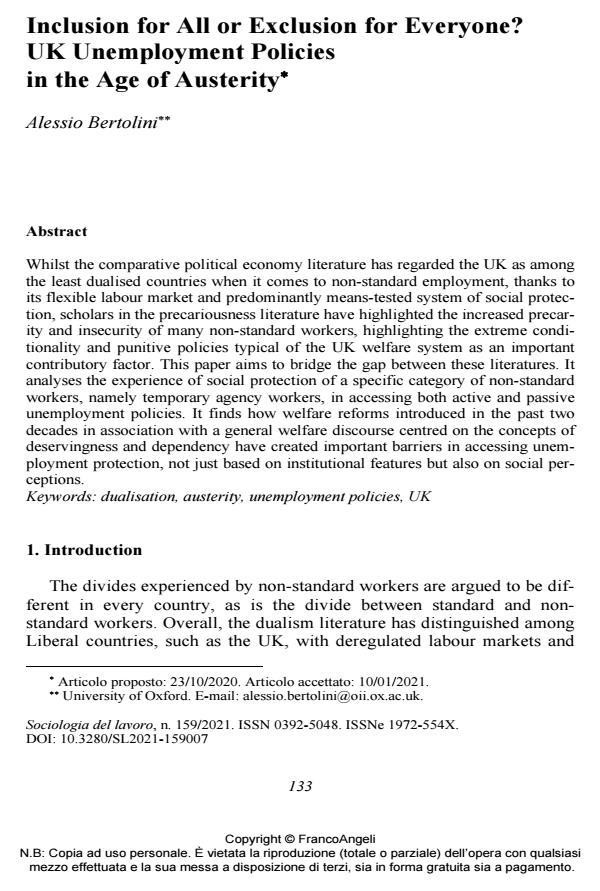Inclusion for All or Exclusion for Everyone? UK Unemployment Policies in the Age of Austerity
Journal title SOCIOLOGIA DEL LAVORO
Author/s Alessio Bertolini
Publishing Year 2021 Issue 2021/159
Language English Pages 19 P. 133-151 File size 212 KB
DOI 10.3280/SL2021-159007
DOI is like a bar code for intellectual property: to have more infomation
click here
Below, you can see the article first page
If you want to buy this article in PDF format, you can do it, following the instructions to buy download credits

FrancoAngeli is member of Publishers International Linking Association, Inc (PILA), a not-for-profit association which run the CrossRef service enabling links to and from online scholarly content.
Whilst the comparative political economy literature has regarded the UK as among the least dualised countries when it comes to non-standard employment, thanks to its flexible labour market and predominantly means-tested system of social pro-tection, scholars in the precariousness literature have highlighted the increased pre-carity and insecurity of many non-standard workers, highlighting the extreme con-ditionality and punitive policies typical of the UK welfare system as an important contributory factor. This paper aims to bridge the gap between these literatures. It analyses the experience of social protection of a specific category of non-standard workers, namely temporary agency workers, in accessing both active and passive unemployment policies. It finds how welfare reforms introduced in the past two decades in association with a general welfare discourse centred on the concepts of deservingness and dependency have created important barriers in accessing un-employment protection, not just based on institutional features but also on social perceptions.
Keywords: Dualisation, austerity, unemployment policies, UK
Alessio Bertolini, Inclusion for All or Exclusion for Everyone? UK Unemployment Policies in the Age of Austerity in "SOCIOLOGIA DEL LAVORO " 159/2021, pp 133-151, DOI: 10.3280/SL2021-159007